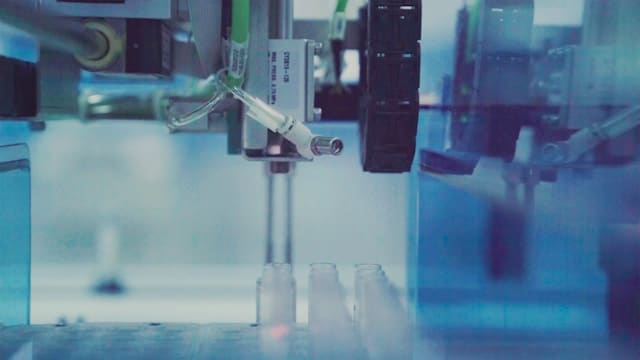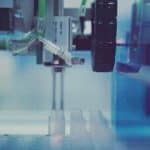In the ever-evolving world of technology, robots and automation are no longer confined to the realms of science fiction. These marvels of modern engineering are becoming increasingly prevalent in a variety of sectors, but perhaps one of the most exciting areas of application is within laboratories. Let’s delve into the cutting-edge advancements being made in the robotic automation of laboratory processes.
The Rise of Automation in Laboratories
With the advent of automation, laboratories are undergoing a revolutionary transformation. Automation is not merely about replacing humans with robots. Instead, it’s about enhancing efficiency, reducing errors, and freeing up valuable human resources for more complex tasks.
Avez-vous vu cela : Can AI Insights into Big Data Improve Strategic Decision-Making in Large Enterprises?
One of the most significant shifts has been the introduction of automated systems. These are custom-built to perform repetitive tasks, such as pipetting and sample preparation, which were traditionally carried out by laboratory technicians. The use of automated systems not only eliminates the risk of human error but also increases throughput by allowing multiple tasks to be performed simultaneously.
Moreover, data generated by these automated devices is automatically recorded, reducing the risk of data loss or misinterpretation. This automation of data transcription is particularly useful in clinical laboratories where the accuracy and integrity of data is paramount.
Cela peut vous intéresser : How Can Blockchain Technology Improve the Integrity of Electronic Health Records?
The Role of Robots in Laboratory Processes
As the complexity and volume of laboratory tasks continue to increase, robots are playing an increasingly integral role. Not just any robots, mind you, but highly sophisticated robotic systems designed to carry out precise processes with high accuracy and consistency.
Robotic systems in laboratories are usually used for sample handling, liquid handling, and process automation. They are particularly valuable in high-throughput screening, where large volumes of samples need to be processed quickly and accurately.
Robotic systems not only increase productivity but also improve safety conditions in the lab. They can handle hazardous substances and perform tasks in environments that may be harmful to humans.
The Integration of Software in Laboratory Automation
Software is the backbone of any automated system. It bridges the gap between the physical world of robots and the digital world of data. In the context of laboratory automation, software controls the operation of devices, manages data, and ensures that tasks are carried out in the correct sequence.
The integration of software in laboratory automation has several benefits. It allows for the standardization of processes, ensures reproducibility of results, and facilitates data sharing among researchers. Additionally, it allows for remote operation of laboratory equipment, freeing up valuable lab space and enabling researchers to perform tasks from anywhere.
The Scholarly Perspective on Laboratory Automation
The academic community has recognized the potential of automation in laboratories and has been rigorously studying its impact and potential for several years. Scholars have found that automation improves repeatability, reduces manual errors, and increases productivity.
However, the scholarly view is not entirely rosy. Researchers caution that while automation can significantly streamline lab processes, it also carries potential risks. For instance, the reliance on machinery could potentially lead to an overreliance on technology, with potentially serious consequences if systems fail or malfunction. Therefore, it is crucial to have robust systems in place to manage and mitigate these risks.
The Future of Laboratory Automation
As we look to the future, it’s clear that the role of automation in laboratories is set to grow. This will be driven by advancements in technology, increasing lab workload, and a continuous push for efficiency and accuracy.
We can expect to see more sophisticated robotic systems with advanced capabilities, such as AI integration, machine learning algorithms, and advanced data analytics. These will further enhance the capabilities of laboratories, enabling them to perform more complex tasks with even greater efficiency.
The future of laboratory automation also promises to be more collaborative. With improvements in technology, we are likely to see more integration between robots and humans, with each playing to their strengths to deliver the most effective and efficient laboratory processes possible. This human-robot collaboration, also known as cobotic systems, represents the future of laboratory work.
Despite the significant progress made, there are still challenges to overcome. These include issues of cost, integration, and acceptance among lab personnel. However, with the potential benefits far outweighing the challenges, the march towards fully automated laboratories appears unstoppable.
The Impact of Machine Learning and AI on Lab Automation
The advent of machine learning and artificial intelligence (AI) has further revolutionized the landscape of lab automation. AI-powered automated systems can learn from data and make decisions, thus enabling them to handle tasks beyond human capacity.
One key area where AI and machine learning have proven particularly disruptive is drug discovery. Automated systems can simulate and evaluate millions of chemical structures, thus speeding up the drug discovery process. Similarly, in clinical chemistry, machine learning algorithms can analyze large sets of patient data to identify patterns and predict outcomes.
In addition to enhancing capability, AI also improves the efficiency of laboratory processes. It can optimize workflows, reduce waste, and ensure better utilization of resources. Furthermore, AI-powered systems can perform repetitive tasks without fatigue, thus reducing errors associated with human exhaustion.
Yet, the incorporation of AI and machine learning into laboratory automation is not without challenges. The quality of output is determined by the quality of input data, making the role of data management crucial. Additionally, AI and machine learning models need to be meticulously validated and regulated, particularly when used in life sciences and clinical laboratory settings where patient safety and data privacy are paramount.
Nevertheless, with continuous advancements in technology, we can expect that AI and machine learning will increasingly become an integral part of lab automation, driving efficiency, productivity, and innovation.
Conclusion: The Unstoppable March towards Fully Automated Laboratories
The ongoing digital revolution, characterized by sophisticated robotic systems, advanced data analytics, and AI integration, is transforming the face of laboratories worldwide. While there are challenges, such as high costs and integration complexities, the potential benefits of lab automation are immense.
Laboratory automation is not simply about replacing humans with robots; it’s about augmenting human capacity and freeing up valuable human resources for more complex tasks. It is about enhancing efficiency, reducing errors, and enabling the execution of high-throughput, high-quality research.
The future promises even more exciting advancements. We anticipate more AI-driven automation, augmented reality in lab processes, and even greater integration of software and hardware. Furthermore, as the concept of ‘cobotic systems’ gains traction, labs of the future will likely feature a seamless blend of robots and humans working side by side.
As one reviews the vast body of work on the topic, from patent filings to Google Scholar articles, it’s evident that the revolution is well underway. The march towards fully automated laboratories is indeed unstoppable. In this journey, we must ensure that automation serves to enhance human capabilities, not replace them, and that it is deployed responsibly and ethically for the benefit of all. The future of laboratories is automated, and it promises to be exciting.











